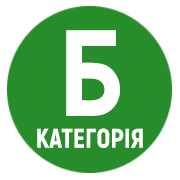Features of competitive potential of agricultural enterprises
Abstract
Competitive potential unlike all other types of potential differs complexity because of the inclusion in its structure of both internal and external components, which necessitates its research and identification of features for agricultural production. The interdependence between competitive potential, competitive status and competitive advantages is considered. The existing approaches of researchers to understanding the structure of competitive potential are generalized. The relationship between enterprise potential and competitive potential is examined. The relation of competitive potential with strategic is determined. The most widespread visions of the enterprise potential as a researched category are generalized. The author's scheme of competitive potential structure of an enterprise is proposed, which combines inputs in the form of resources and outputs as finished products, where directly the enterprise potential as its ability to produce products from available resources is defined as functional. Together with it the market and resource potential are distinguished that make up the economic enterprise potential. The influence of resource potential on economic and competitive potentials depending on industries is investigated. The crucial role of the resource potential in the competitive potential formation of the enterprises in agricultural sector has been proved. The structure of the resource potential is determined. The content, purpose and structure of the enterprise functional potential are considered.
It is determined that the analysis of resource potential and demand in the domestic and foreign markets are decisive guidelines for choosing the activity directions of domestic agricultural producers, thus constituting most of the competitive potential.
The competitive potential of an agricultural enterprise is a derivative economic category from the interaction of resource potential, functional and market potentials of the enterprise, where at the first level there are parameters of resource and market potentials, restrictions beyond which create boundaries for agricultural producers, at the second level there is the enterprise functional potential, and at the third - competitive potential, which combines all elements of the internal and external environment of the enterprise to achieve the goals of competition, which in the long term ensures the implementation of the goals and the adopted strategy of activity, acting in its the main component of the strategic potential at the enterprise.
References
2. Кузьминчук Н. В. Конкурентний статус підприємства: теоретичний аспект / Н. В. Кузьминчук, О. Ю. Терованесова // Матер. Міжнар. наук.-практ. конф., 14-15 листопада 2014р. // Нац. гірничий ун-т. У 2-х частинах. – Дніпропетровськ: Видавни-чий дім «Гельветика», 2014. – Ч. 1. – 188 с.
3. Філиппова С.В. Оцінювання та аналіз конкурентоспроможності промислових підприємств як основні функції управ-ління процесом її організаційно-економічного забезпечення / С.В. Філиппова, С.О. Черкасова // Вісник Житомирського держав-ного технологічного університету. Серія : Економічні науки. – 2010. – № 3. – С. 110–115.
4. Кучковa К. О Конкурентні переваги сільськогосподарського підприємства в сучасних умовах господарювання / К. О. Кучкова // Ефективна економіка. – 2018. – № 1. – Режим доступу: http://www.economy.nayka.com.ua/
5. Бєляєва Н. С. Методи оцінки та роль ланцюжка цінностей при формуванні конкурентного потенціалу промислового підприємства / Н. С. Бєляєва // Вісник Хмельницького національного університету. Серія "Економічні науки". – 2013. – Т. 2, № 4. – С. 43-52.
6. Котелевець Д. О. Удосконалення механізму управління конкурентоспроможністю переробних підприємств / Д. О. Ко-телевець. Дис. на зд. наук. ст. канд. ек. наук 08.00.04. – Запоріжжя. – 2018, 235 с.
7. Мельник О. І. Внутрішні фактори конкурентоспроможності сільськогосподарських товаровиробників / О. І. Мельник // Економіка і управління. – 2014. – № 1. – С. 55-60.
8. Шульга М. О. Управління конкурентоспроможним потенціалом підприємств харчової промисловості / М. О. Шульга. Дис. на зд. наук. ст. канд. ек. наук за спец. 08.00.04. – Херсон. – 2015, 210 с.
9. Зінов’єв Ф. В. Конкурентний потенціал як основа формування конкурентних переваг садівницьких підприємств / Ф. В. Зінов’єв, К. М. Речка // Таврійський державний агротехнологічний університет. – 2012. – С. 67-73.
10. Николюк О. М. Оцінка використання конкурентного потенціалу сільськогосподарського підприємства / О. М. Николюк, В. Б. Полянко // Інноваційна економіка. – 2015. – №. 4. – С. 112-117.
11. Демчук Н. І. Підвищення конкурентоспроможності виробництва насіння соняшнику / Н. І. Демчук. Дис. на зд. наук. ст. канд. ек. наук за спец. 08.00.04. – 2017, 224 с.
12. Орел А. М. Науково-методологічні засади детермінації конкурентного потенціалу підприємства / А. М. Орел // Еконо-мічний простір. – 2019. – № 151. – С.170-184.
13. Олексюк О. І. Управління потенціалом акціонерних товариств: автореф. дис. канд. екон. наук / О. І. Олексюк. – К., 2001. 20 с.
14. Турило А. А. Потенціал підприємства: сутність та методологічні підходи до визначення / А. А. Турило // Науковий жу-рнал Економічний вісник Національного гірничого університету. – 2014. – №3. – С. 65-71.
15. Гринь Є. Л. Ефективність управління організаційними змінами в менеджменті підприємств: теорія, методологія, практика: монографія / Є. Л. Гринь. – Харків : «Смугаста типографія», 2018. – 478 с.
16. Терованесова О. Ю. Конкурентний статус підприємства в системі наукових категорій / О. Ю. Терованесова // Вісник економіки транспорту і промисловості. – 2014. – Вип. 48. – С. 153-158. – Режим доступу: http://nbuv.gov.ua/UJRN/Vetp_2014_48_31







